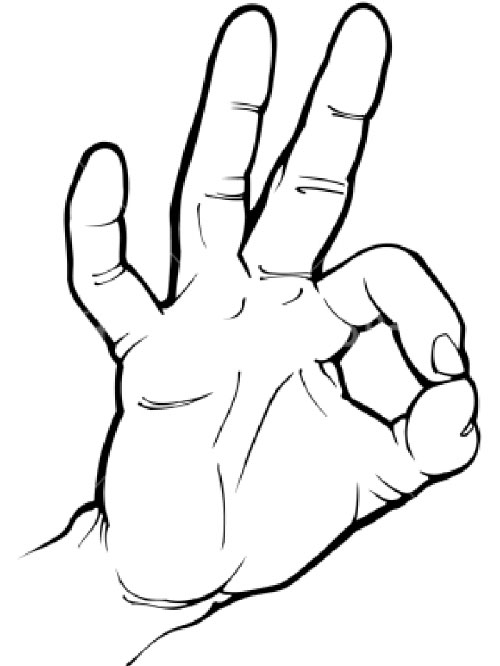The three most popular hand symbols in the world
Never let your countrymen turn their eyes in wonder when we make a certain symbol of harmless hand. Because in each different culture, these symbols have a meaning that is not the same.
1. Circle symbol

In Japan, the symbol OK means money
This is a very popular symbol in the United States in the early 19th century. At this time, newspapers began to prefer initials in common phrases. Typically, the word 'OK'. Some people believe that it is the abbreviation for 'all correct' (all is fine) but often mistakenly written as 'oll correct' . While others claim that it is a "knock-out" counter-meaning, "KO" . But obviously, the circle itself represents the letter 'O' in the 'OK' sign. The meaning of 'OK' became popular in the English-speaking community and quickly spread everywhere thanks to American television and movies.
However, this symbol has different origins and meanings in some places:
In France and Belgium, 'OK' means zero or worthless. For example, when you go to a French restaurant, if the staff asks if your seat is okay and you sign OK, they will move the table to help you.
In Japan, the symbol 'OK' means money. If you do business in Japan and make this sign with 'Yes' or 'Accept' , Japanese people may think you are asking them to bribe.
In some Mediterranean countries, this is a sign often used to refer to gay men.
The Turks think you call him a fool. In Arab countries, it is rarely used because it is considered a sign of threats or profanity.
2. Sign up thumbs up

In Australia, the thumbs up signifies that you are looking for a ride
In countries strongly influenced by British culture such as Australia, America, South Africa, Singapore and New Zealand, three thumbs up signify: waving the car, 'OK' and a swearing sentence . In Greece, the forward thumb means 'Disappear'.
In addition, when Europeans count from 1 to 5, they use the thumb pointing up with the meaning '1' , the index finger is '2'. Meanwhile most English speakers count 'number 1' with the index finger and 'number 2' with the middle finger. In this case, the thumb up will represent ' number 5'.
Besides, the thumb is also used to express power or when someone controls us. Explaining this, it is believed that the thumb is more flexible and has more power than the other fingers.
3. Notation V

A familiar victory symbol in many countries
This symbol is very popular in Austrailia, New Zealand and the UK, meaning a swearing sentence if the palm is inward. In the meantime, the palm facing outwards when making the symbol 'V' represents 'victory'.
In some European countries, the V-shaped sign with the palm facing in still means victory. Therefore, the fact that an Englishman uses this sign to provoke the Germans may make the Germans think that they are the winners.
In some other European countries, this symbol means 'number 2' . So if an alcoholic worker here is insulted by British or Australians with a V symbol, it is understandable when he gives them two beers.
- 7 symbols everyone knows their origin, few have heard of it
- The most popular lucky symbols in the world
- 14 famous symbols but few people understand the meaning (Part 2)
- These 6 symbols are well known but their origin is guaranteed no one has heard
- Mystery of ancient Egyptian symbols
- Decode the most classic symbols of the ancient world
- Confusing symbols between the flight attendants on the plane
- Sign language differences in countries
- November 13, 1947 - The Soviet Union completes the development of an AK-47 assault rifle
- Symbols in the washing machine and on clothing labels need to know
- The origin of popular hand gestures
- 3 species of this Chinese mascot will disappear forever if nothing changes
 'Fine laughs' - Scary and painful torture in ancient times
'Fine laughs' - Scary and painful torture in ancient times The sequence of numbers 142857 of the Egyptian pyramids is known as the strangest number in the world - Why?
The sequence of numbers 142857 of the Egyptian pyramids is known as the strangest number in the world - Why? History of the iron
History of the iron What is alum?
What is alum?